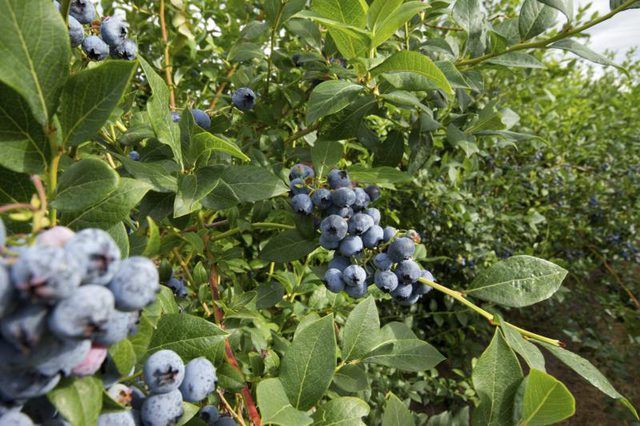Bulbs
Flower Basics
Flower Beds & Specialty Gardens
Flower Garden
Garden Furniture
Garden Gnomes
Garden Seeds
Garden Sheds
Garden Statues
Garden Tools & Supplies
Gardening Basics
Green & Organic
Groundcovers & Vines
Growing Annuals
Growing Basil
Growing Beans
Growing Berries
Growing Blueberries
Growing Cactus
Growing Corn
Growing Cotton
Growing Edibles
Growing Flowers
Growing Garlic
Growing Grapes
Growing Grass
Growing Herbs
Growing Jasmine
Growing Mint
Growing Mushrooms
Orchids
Growing Peanuts
Growing Perennials
Growing Plants
Growing Rosemary
Growing Roses
Growing Strawberries
Growing Sunflowers
Growing Thyme
Growing Tomatoes
Growing Tulips
Growing Vegetables
Herb Basics
Herb Garden
Indoor Growing
Landscaping Basics
Landscaping Patios
Landscaping Plants
Landscaping Shrubs
Landscaping Trees
Landscaping Walks & Pathways
Lawn Basics
Lawn Maintenance
Lawn Mowers
Lawn Ornaments
Lawn Planting
Lawn Tools
Outdoor Growing
Overall Landscape Planning
Pests, Weeds & Problems
Plant Basics
Rock Garden
Rose Garden
Shrubs
Soil
Specialty Gardens
Trees
Vegetable Garden
Yard Maintenance
Information on Blueray Blueberry Bushes
Information on Blueray Blueberry Bushes. "Blueray" blueberry (Vaccinium "Blueray") is a highbush blueberry cultivar notable for its generous yield of large, flavorful berries, decorative red fall foliage and its impressive height, which may reach up to 8 feet. This deciduous shrub also attracts birds and butterflies to the...

"Blueray" blueberry (Vaccinium "Blueray") is a highbush blueberry cultivar notable for its generous yield of large, flavorful berries, decorative red fall foliage and its impressive height, which may reach up to 8 feet. This deciduous shrub also attracts birds and butterflies to the garden, and offers winter interest with its striking red stems. Like other blueberry varieties, "Blueray" requires specific cultural conditions to thrive.
Choose a Sunny Spot
"Blueray" is a cold-hardy blueberry variety that will grow in U.S. Department of Agriculture plant hardiness zones 5 to 8. It's crucial to grow "Blueray" within the recommended hardiness zones, as each variety requires a specific number of chilling hours, or hours when temperatures are between 32 and 45 degrees Fahrenheit. "Blueray" requires 800 chilling hours.
Though the shrub will grow in partial shade, blueberries generally produce their best growth in full sunlight. Avoid low areas with poor drainage and sites surrounded by trees, as trees block sunlight and reduce air circulation, while also competing for water and nutrients in the soil. Some protection from a building or structure is helpful to prevent wind damage. If planting multiple shrubs, provide 5 to 7 feet between bushes.
Improve Soil in Advance
An acidic, rich, well-draining soil with a pH between 4.8 and 5.2 is ideal for this plant. The University of Maine Extension recommends getting a soil test to determine the pH level of your soil before planting blueberries. Soil with a high pH may cause chlorosis, a damaging yellowing of the leaves. To lower pH, add approximately 1.2 pounds of ground sulfur or 7.2 pounds of aluminum sulfate per 100 square feet to the soil. This will lower the pH half of a pH unit, for example from 5.5 to 5.0. About 1 month after planting, fertilize with 1 ounce of a 10-10-10 fertilizer per shrub, applying it in a ring 15 to 18 inches away from the base of the plant. Store unused fertilizer away from children and pets.
Water Frequently
Water regularly through the growing season to keep the soil moist, providing about 1 to 2 inches per week. "Blueray" is a thirsty shrub that will tolerate wet conditions, though it also requires good drainage. Incorporating organic matter such as Douglas fir sawdust, bark or peat moss into the soil before planting will help improve drainage. Apply a 4- to 6-inch layer of organic mulch, such as pine needles, composted leaves or bark around the base of shrub after planting to help retain moisture in the soil and suppress weeds. Replenish the mulch throughout the growing season to maintain thickness.
Provide Regular Maintenance
Once "Blueray" is at least 3 years old, it will require annual pruning. Cornell University notes that "Blueray" may need more pruning than other varieties as it tends to bow over with heavy fruit yields. In late winter or early spring, prune out weak or diseased canes, as well as those that are more than 6 years old or canes that are dropping low to the ground. If the shrub is producing few new canes, prune old canes to a height of 4 to 8 inches rather than pruning them all the way to the ground. Because birds love blueberries, you may need to throw a net over your shrub in July, when fruits are ripening.